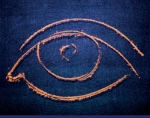
Eye Services
A wide range of Eye Specialists and Eye services are available, covering diagnosis, management and surgery.
The Blind Foundation is also available, providing support and practical assistance for sight loss.
Ophthalmology
Ophthalmology specialists deal with the diagnosis and treatment of disorders and diseases of the eye. This includes the area surrounding the eyes such as bones, muscles, eyelids and tear ducts. Specialists often have areas of particular interest and expertise and some consult at a number of locations.
Glaucoma
Glaucoma is a common eye condition in which the fluid pressure inside the eyes rises because of reduced fluid drainage from the eye. Early diagnosis and careful management are the keys to preventing vision loss.
Cataract Surgery
As people age, the lens of the eye can become ‘cloudy’, covered with an opaque film, affecting sight, eventually causing total loss of sight. Cataract surgery involves removal of the entire clouded lens (the cataract), usually followed by replacement of the lens with an intraocular lens (IOL) made of plastic, silicone, acrylic or other material.
Macular Degeneration
Macular degeneration is a disease that progressively destroys the macula, the central portion of the retina, which is the light-sensitive tissue at the back of the eye. The centre of vision is affected, impairing ability to see straight ahead clearly and making it difficult to read, drive or carry out other activities that require fine, sharp vision. Diagnosing macular degeneration early is important, as once it is advanced, no treatment can restore lost vision.
Medical Retina
Medical retina is a subspecialty that relates to the diagnosis and treatment of problems with the retina through non-surgical means. The retina is the light-sensitive tissue at the back of the eye.
Pterygium Surgery
Pterygium surgery is performed to remove a pterygium (plural pterygia), a benign (non-cancerous) growth of the conjunctiva, the clear, thin tissue that lies over the sclera, the white part of the eye. It may affect one or both eyes, and can be caused by overexposure to bright sunlight. A pterygium usually appears as a painless area of raised white tissue, which may become inflamed and cause burning and irritation.
Squint Management
A squint, or strabismus, occurs when the two eyes are not looking in the same direction (‘crossed eyes’). It may be apparent all the time or only when the person is tired or focusing on a near or distant object. Surgery may be required to move the eye muscles and thereby straighten the eye. In children, surgery is usually performed between the ages of six months and four years, and in adults it may be performed at any time once the squint has stabilised.
Optometrists
Services include eye examinations, contact lenses, prescription glasses, treatment for red eye, diabetic retinal screening.


























































